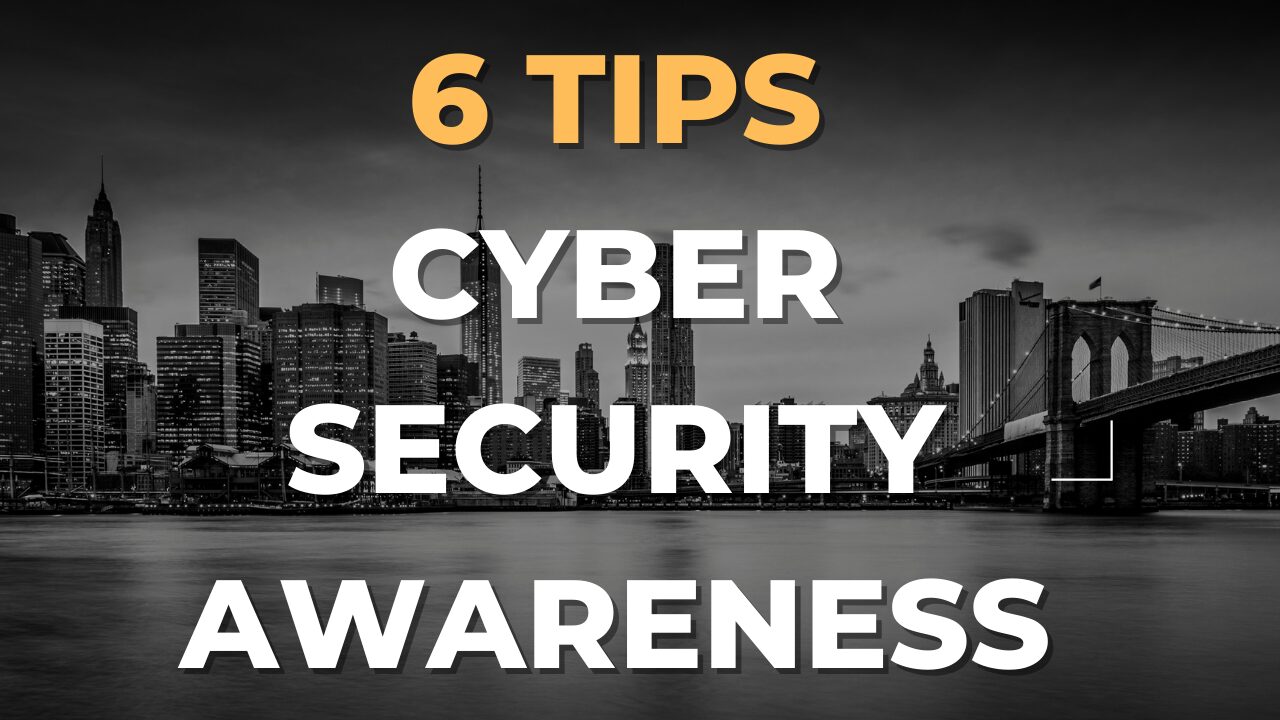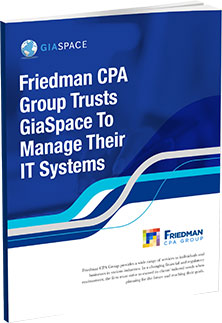GiaSpace 2024 Cybersecurity Checklist: The Ultimate Guide for Florida Organizations
As we enter 2024, the cybersecurity landscape in Florida continues to evolve, with threats becoming more sophisticated and organizations facing unique challenges in mitigating risks. To combat these growing risks, GiaSpace has released a comprehensive 2024 Cybersecurity Checklist aimed at helping organizations across the state enhance their security posture and stay prepared against potential threats.
The GiaSpace 2024 Checklist covers various strategic and tactical measures organizations can implement to ensure robust cybersecurity. This includes organizational preparedness, technical safeguards, access control policies, incident response planning, vendor management, patch management, and monitoring and reporting systems. The goal is not only to address the current cyber threat landscape but also to future-proof cybersecurity strategies.
Key Takeaways
- GiaSpace’s 2024 Cybersecurity Checklist is designed to help organizations in Florida bolster their security infrastructure and resilience.
- The checklist covers various topics, from preparedness technical safeguards to future-proofing strategies.
- By following the guidelines in the checklist, organizations can effectively address risks and safeguard their valuable assets and data.
Download GiaSpace’s 2024 Cybersecurity Checklist here
Cyber Threat Landscape in Florida
Ransomware Trends
In recent years, we’ve witnessed a significant increase in ransomware attacks targeting organizations across various sectors. Florida has experienced its fair share of these incidents as businesses, government agencies, and healthcare facilities have become victims of sophisticated ransomware campaigns. According to recent studies, ransomware attacks in Florida increased by approximately 23% in 2024 compared to the previous year. The increasing trend has prompted security experts to push for more preventative measures and increased cybersecurity investments. Organizations should remain vigilant and invest in comprehensive security solutions to safeguard their digital assets.
Phishing Attack Statistics
Another critical aspect of Florida’s cybersecurity landscape is the prevalence of phishing attacks. These targeted email-based campaigns prey upon both individual users and organizations. In 2024, phishing attacks saw a notable increase in Florida, making up around 19% of all cybersecurity incidents. These attacks can lead to significant financial losses and reputational damage for affected companies.
To combat phishing attacks, we recommend that organizations take the following steps:
- Implement Email Filtering: Organizations can scan incoming emails and detect potential phishing attacks by setting up strong email filters.
- Raise Employee Awareness: Regularly train and educate employees to recognize phishing emails, ensuring they understand the importance of not clicking on suspicious links or downloading unexpected attachments.
- Multifactor Authentication (MFA): Encourage using MFA for accessing company accounts, adding an extra layer of security to prevent unauthorized access.
Through combined efforts, organizations across Florida can mitigate the risks posed by evolving ransomware and phishing attacks in 2024.
GiaSpace 2024 Checklist Overview
As we progress through 2024, cybersecurity continues to be a major concern for organizations across Florida. To aid organizations in bolstering their defenses, we’ve prepared a comprehensive cybersecurity checklist to follow. In this overview, we’ll discuss the key security measures and outline the relevant compliance and regulations organizations should be aware of.
Key Security Measures
The foundation of a solid cybersecurity posture begins with implementing essential security measures. Some of the key security measures outlined in the GiaSpace Cybersecurity Assessment include:
- Regular security audits: Identify and promptly address potential vulnerabilities in your company’s network.
- Strong password policies: Implement robust password creation, maintenance, and storage policies.
- Two-factor authentication (2FA): Add an extra layer of protection for accessing critical systems.
- Continuous risk assessments: Regularly assess cyber risks and update security measures accordingly.
- Effective management of third-party vendors: Ensure compliance with security standards by all external parties.
- Employee training: Incorporate cybersecurity training in your onboarding process and provide ongoing employee education.
Compliance and Regulations
In addition to the key security measures, you must be aware of relevant compliance frameworks and regulations specific to your industry. Becoming compliant not only helps organizations protect their assets better but also ensures that they avoid hefty fines and legal consequences. Some important regulations and frameworks to be aware of include:
- General Data Protection Regulation (GDPR): Although primarily a European regulation, GDPR can impact organizations across Florida that store or process the personal data of EU citizens.
- Health Insurance Portability and Accountability Act (HIPAA): Organizations in the healthcare industry must adhere to these regulations, which address the security and privacy of patient health information.
- Payment Card Industry Data Security Standard (PCI-DSS): This standard must be followed by any organization that processes, stores, or transmits payment card information.
- Florida Information Protection Act (FIPA): This state-specific legislation calls for organizations to adopt certain security measures to protect personal information and report data breaches.
Utilizing crucial security measures while diligently adhering to compliance frameworks and regulations will protect your organization’s assets and, more importantly, its reputation from the continually evolving threat landscape.

Organizational Preparedness
Risk Assessment Strategies
To help organizations across Florida prepare for cybersecurity challenges in 2024, we have developed a comprehensive checklist to guide them in achieving optimal security. One vital aspect of organizational preparedness is implementing effective risk assessment strategies. Businesses can prioritize their security efforts and allocate resources efficiently by regularly identifying, analyzing, and evaluating potential threats and vulnerabilities.
Some suggested steps for risk assessment include:
- Cataloging all digital assets, such as software, hardware, and data.
- Identifying possible threats, such as phishing attacks, ransomware, and data breaches.
- Assessing vulnerabilities, like unpatched software and weak passwords.
- Estimating the potential impact of each threat and vulnerability.
- Setting priorities and developing mitigation plans.
Furthermore, organizations should consider using automated tools and third-party experts to ensure a robust and unbiased risk assessment process.
Employee Training Programs
Employee training plays a crucial role in strengthening an organization’s cybersecurity posture. A well-informed workforce is more adept at identifying and reporting suspicious activities, reducing the likelihood of successful attacks. In line with this, our 2024 cybersecurity checklist recommends implementing employee training programs that focus on the following areas:
- Phishing awareness: Teach employees to recognize phishing emails and avoid falling victim to scams by verifying sender information and avoiding interaction with suspicious attachments or links.
- Password security: Emphasize the importance of using strong, unique passwords and employing two-factor authentication (2FA) wherever possible.
- Safe Internet usage: Instruct employees on using secure browsing practices, avoiding unauthorized downloads, and ensuring safe use of public Wi-Fi networks.
- Data protection: Educate employees in handling sensitive information and adhering to data privacy regulations, such as encrypting emails and disposing of sensitive materials securely.
By integrating these training programs into the organizational culture, businesses can significantly enhance their cybersecurity preparedness and reduce risks associated with human error.
Technical Safeguards
This section will discuss the various technical safeguards organizations must implement to protect their systems, data, and networks from cybersecurity threats. The following subsections delve into the crucial aspects of technical safeguards, such as firewall implementation, intrusion detection systems, and data encryption protocols.
Firewall Implementation
A firewall is a foundational security measure that serves as an organization’s first line of defense. A properly configured firewall prevents unauthorized access to your network and protects internal resources from potential threats. We recommend utilizing both hardware and software-based firewalls for a robust defense strategy. Keep your firewalls updated with the latest patches and security rules to ensure maximum effectiveness in combating ever-evolving threats.
Intrusion Detection Systems
The cybersecurity landscape is constantly changing, and new threats emerge every day. To tackle this issue, organizations should implement Intrusion Detection Systems (IDS) to monitor and analyze network traffic. An effective IDS alerts you to potential vulnerabilities, unusual activities, or unauthorized access attempts on your network. We suggest incorporating both host-based and network-based IDS for a comprehensive security approach.
- Host-based IDS primarily monitors activities on individual devices (e.g., servers and workstations) to detect unusual behavior or unauthorized access attempts.
- Network-based IDS inspects network traffic to identify potential security issues and prevent breaches.
Regularly updating and fine-tuning the IDS can enhance its efficacy in detecting and addressing threats promptly.
Data Encryption Protocols
Data encryption protects sensitive information from unauthorized access and potential data breaches. We recommend incorporating end-to-end encryption protocols to ensure data remains secure at rest and in transit.
- At rest: Use strong encryption methods (e.g., AES-256, RSA) to protect sensitive data stored on drives, servers, or databases.
- In transit: Employ Transport Layer Security (TLS) or other secure communication protocols to safeguard data transmitted over the internet.
In conclusion, implementing these technical safeguards can help organizations in Florida prevent cyberattacks and maintain a secure digital environment. You can protect your organization’s sensitive information by staying updated on the latest cybersecurity trends and investing in appropriate measures.
Access Control Policies
As we move into 2024, organizations in Florida need to prioritize their cybersecurity initiatives. At GiaSpace, we have developed a comprehensive Cybersecurity Checklist that organizations can follow to ensure their security measures are robust and up-to-date. This section will focus on Access Control Policies and their significance in securing your organization’s digital assets.
User Authentication
Proper user authentication is critical for maintaining secure access to your organization’s sensitive information. We recommend incorporating the following best practices into your access control policy:
- Multi-factor authentication (MFA): Implement multi-factor authentication for all users to decrease the likelihood of unauthorized account access significantly. MFA typically involves a combination of something a user knows (password), something they have (security token), and something they are (biometrics).
- Password policies: Enforce strong password policies, including minimum password length, complexity requirements, and periodic password changes. Encourage password managers to facilitate users’ adoption of strong, unique passwords.
- Single sign-on (SSO): Implement a single sign-on solution to streamline user access to multiple applications, reducing the number of credentials users need to remember and minimizing the risk of password reuse across different platforms.
Privileged Account Management
Privileged accounts pose a significant risk to organizations as they grant broad permissions to access sensitive data. To effectively manage these accounts, consider the following recommendations:
- Separation of duties: Establish clear roles for privileged users to ensure that responsibilities and access are segregated and properly assigned. This minimizes the likelihood of unauthorized access to sensitive data.
- The least privilege principle grants users the minimum access required to perform their job responsibilities. Regularly review and update access permissions to ensure users only have access to the necessary information.
- Privileged access monitoring: Implement solutions for monitoring and auditing privileged user activity to identify potential abuse, unauthorized access, or other suspicious events. This helps organizations quickly detect and respond to potential threats.
In conclusion, implementing robust access control policies, including user authentication and privileged account management practices, is vital for organizations to safeguard their digital assets. Following our 2024 Cybersecurity Checklist will help organizations in Florida ensure the ongoing security of their sensitive information and systems.
Incident Response Planning
In 2024, having a systematic approach to managing the aftermath of security breaches or cyberattacks is crucial for organizations of all sizes. Our objective is to limit damage and reduce recovery time and costs with clear communication strategies in place throughout all stages of incident response planning. This section will cover the essential aspects of incident response planning, including forming a response team and establishing recovery procedures.
Response Team Formation
Assembling a strong response team is essential in navigating cybersecurity incidents successfully. Our recommended steps to create an effective team include:
- Identifying key stakeholders: Include representatives from IT, legal, human resources, public relations, and management to ensure a comprehensive approach to incident response.
- Defining roles and responsibilities: Clearly outline the duties of each team member to avoid confusion during a cyber incident.
- Training and awareness: Regularly conduct training sessions to keep team members up to date on the latest threats and best practices in cybersecurity.
Recovery Procedures
Recovery procedures are integral to any incident response plan, providing the roadmap for restoring normal operations after a cyberattack. Consider the following best practices when establishing recovery procedures:
- System backups: Ensure reliable and current system backups are in place and ready to be utilized in case of data loss or system compromise.
- Prioritization: Identify critical systems and applications requiring immediate recovery attention, ensuring minimal downtime for essential operations.
- Testing and validation: Perform periodic tests of recovery procedures to confirm their effectiveness and update them as necessary.
- Documentation: Maintain up-to-date documentation of recovery procedures, including contact details for relevant internal and external parties, such as service providers and law enforcement agencies.
By carefully forming a response team and outlining efficient recovery procedures, organizations can be better equipped to handle cybersecurity incidents and minimize the potential negative impacts.
Vendor and Third-Party Management
Supply Chain Security
In 2024, supply chain security remains a critical aspect of comprehensive cybersecurity. Many organizations, as indicated by a Prevalent study, reported third-party breaches and consider them a top concern. As a result, companies need to prioritize securing their supply chains with proper protocols and monitoring.
We recommend the following best practices for improving supply chain security:
- Vendor vetting: Ensure thorough due diligence when selecting vendors and evaluating their security measures.
- Regular monitoring: Continuously monitor the cybersecurity posture of your supply chain partners to detect potential threats early on.
- Risk awareness training: Educate your employees and stakeholders on the potential risks associated with third-party vendors and their possible impact on your organization.
- Incident response plans: Develop and maintain robust incident response plans for supply chain disruptions due to cyberattacks.
Service Provider Assessments
Assessing the cybersecurity measures of your service providers is crucial in mitigating the risk of data breaches. We recommend incorporating the following steps into your service provider assessment process:
- Establish a Security Baseline: Determine the minimum security requirements for your organization and ensure that all your service providers adhere to these standards. Examples include compliance with NIST SP 800-53, 800-161, and CSF 1.1.
- Conduct Security Questionnaires: Utilize standardized questionnaires (e.g., SIG Questionnaire) to obtain relevant information on your service providers’ security controls and measures.
- Perform On-site Audits: Where necessary, conduct on-site audits to verify the security control implementations reported by your service providers.
- Continuous Monitoring: Monitor your service providers’ cybersecurity posture continuously, ensuring compliance with your organization’s security baseline.
By implementing these measures, you can greatly enhance the security of your organization’s vendor and third-party relationships. Remember, staying vigilant and proactive in this area is crucial for reducing the risk of cyberattacks across your organization.
Regular Updates and Patch Management
In 2024, one of the critical aspects of maintaining a robust cybersecurity posture for organizations across Florida is implementing regular updates and patch management. As we’ve seen from recent search results, cybersecurity continues to evolve, and new vulnerabilities are discovered frequently.
Our approach at GiaSpace focuses on timely and effective patch management, which can significantly reduce the attack surface for criminals looking to exploit these vulnerabilities. One of the ways we help our clients stay ahead of potential threats is by offering solutions that automate the update process. This ensures that systems are protected with the latest security patches, minimizing the risk of security breaches.
A crucial practice in patch management is prioritizing updates based on their impact and the severity of the vulnerabilities they address. Ideally, high-priority updates should be applied as soon as possible, while less critical updates should still be applied on time. To help organizations manage this process, we recommend creating a patch management schedule that includes:
- A regular, recurring time to review and assess the available updates
- The identification of high-priority updates
- The allocation of resources and time to implement updates
- Regular monitoring of systems to verify the successful implementation of updates
Additionally, monitoring vendor announcements for urgent security updates, such as those mentioned in the search results, is essential. Staying informed about critical patches from software and hardware vendors helps organizations proactively address newly discovered vulnerabilities.
Finally, maintaining a software inventory is another vital aspect of an efficient patch management strategy. It includes information such as versions and patch levels, which helps IT teams track and manage updates for every software used within the organization.
By following these best practices for regular updates and patch management, we aim to support organizations across Florida in maintaining a strong cybersecurity posture in 2024 and beyond.
Monitoring and Reporting
Continuous Surveillance
In the current digital landscape, we must emphasize the importance of continuous surveillance to ensure the security of our organization’s data and systems. With the GiaSpace 2024 Cybersecurity Checklist, we focus on monitoring network traffic, server logs, and user activity for any signs of intrusion or irregularity. We can proactively spot potential security breaches by implementing real-time threat detection measures and responding promptly to minimize potential damage.
We recommend utilizing security tools such as SIEM (Security Information and Event Management) systems and IDS (Intrusion Detection Systems) to streamline this process for comprehensive monitoring and alerts. Remember to keep these tools updated to maintain maximum effectiveness.
Audit and Review Processes
Regular audits and reviews are essential for evaluating the current state of our organization’s cybersecurity measures. The GiaSpace 2024 Cybersecurity Checklist suggests periodic risk assessments to identify and address vulnerabilities. These assessments can include:
- Vulnerability scans
- Penetration tests
- Social engineering tests
Vulnerability Scans: Importance is placed on regularly scanning networks and systems to identify security weaknesses. By conducting these scans, we can detect and remediate vulnerabilities before malicious parties exploit them.
Penetration Tests: A comprehensive approach to testing the organization’s defenses involving authorized attempts to bypass security controls using the same methods attackers might employ. We can assess the effectiveness of our security measures and rectify any gaps identified during these tests.
Social Engineering Tests: Cybersecurity is not solely reliant on technical solutions, as human errors can pose just as significant a risk. We can evaluate staff awareness of these tactics by running simulated social engineering attacks, such as phishing emails or pretexting calls, and retraining as needed.
In conclusion, the GiaSpace 2024 Cybersecurity Checklist aims to provide a proactive approach for organizations across Florida, focusing on continuous surveillance and regular audits to ensure optimal security.
Future-Proofing Cybersecurity
In the ever-evolving cybersecurity landscape, businesses must stay vigilant and adapt to new challenges. Through our 2024 Cybersecurity Checklist, we aim to help organizations across Florida maintain and strengthen their cybersecurity postures. This section will focus on two key areas that demand attention and investment: emerging technologies and predictive security analytics.
Emerging Technologies
As technology progresses, the potential for new attack vectors and vulnerabilities grows. Organizations must stay up-to-date with the latest technologies and adopt suitable strategies to minimize risks. In this regard, we highlight the following key areas:
- Artificial intelligence (AI): AI offers great potential in improving cybersecurity by automating threat detection and response. But it can also be exploited by attackers to create more sophisticated threats.
- Internet of Things (IoT): As IoT devices become more prevalent, securing them and the vast amount of data they generate has become an important priority.
- Blockchain: The decentralized nature of blockchain technology provides opportunities for enhanced security but also presents challenges around scaling, privacy, and interoperability.
Organizations should actively explore and invest in the latest technologies while maintaining a sound infrastructure and adhering to best practices to stay ahead of the curve.
Predictive Security Analytics
Machine learning and AI are transforming how threats are detected and dealt with. By analyzing historical data, current threats, and emerging patterns, AI-driven predictive security analytics can help organizations take preemptive measures and address vulnerabilities before they can be exploited by hackers1.
To make the most of this technology, organizations should consider:
- Integrating AI and machine learning into their security infrastructure to augment capacity and efficiency.
- Investing in high-quality threat intelligence feeds to improve the accuracy and effectiveness of predictive security analytics continually.
- Ensuring robust data privacy and governance measures to maintain compliance and trust.
By addressing these areas and making strategic investments, organizations can significantly improve their ability to proactively anticipate and respond to cyber threats.
Why GiaSpace Is The Top Cybersecurity Team Across Florida
At GiaSpace, we understand the ever-increasing need for robust cybersecurity solutions for businesses in Florida. We pride ourselves on being the top cybersecurity team in the state by offering comprehensive services that safeguard digital assets and empower employees to be proactive against cyber threats.
Our approach to cybersecurity is founded on our profound technical expertise and extensive industry experience. We provide a combination of:
- State-of-the-art technology: Leverage cutting-edge tools to ensure maximum security, performance, and reliability.
- Proactive monitoring: Continuous support and proactive monitoring to address potential issues before they become critical problems.
- Customized solutions: Tailored to each business’s unique requirements and challenges, improving efficiency and decreasing risk exposure.
Our recently released Cybersecurity Checklist stands as a testament to our commitment to helping businesses stay ahead of evolving cyber threats. The checklist includes but is not limited to:
- Ensuring up-to-date security patches and updates
- Employee training and awareness programs
- Regular security assessments and audits
- Implementing multi-factor authentication (MFA)
- Encouraging strong password policies and practices
- Enhanced monitoring and intrusion detection
Furthermore, our dedication to providing unparalleled services has earned us recognition as Florida’s top cybersecurity team in various publications and testimonials from satisfied clients.
As we continue to move forward, our focus remains on delivering exceptional cybersecurity solutions to businesses of all sizes across Florida. Trust in GiaSpace to protect your organization’s most valuable assets while providing peace of mind in today’s rapidly evolving cyber landscape.







